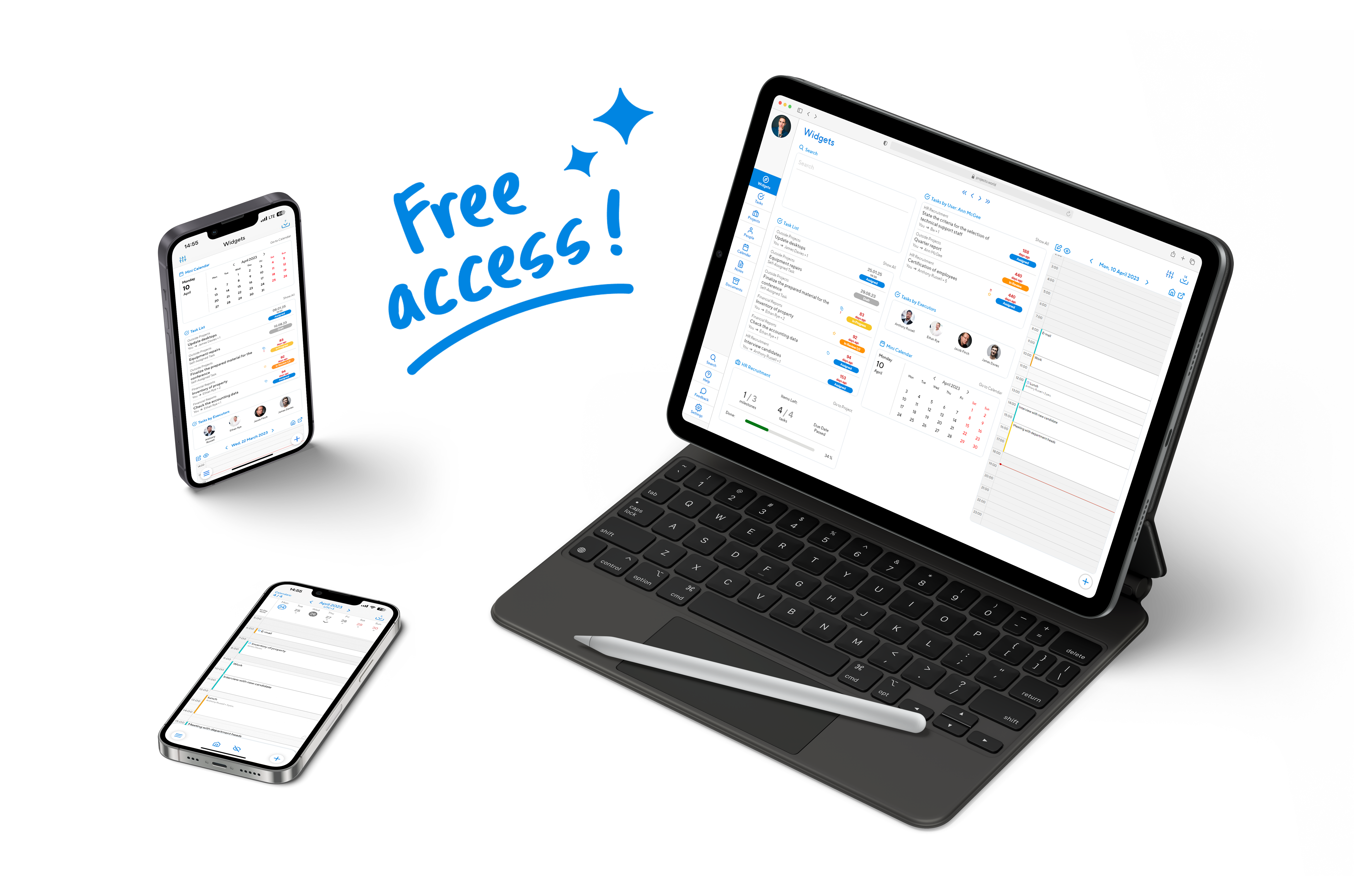Business communication is an important part of the work process. It has strict ethics and specific objectives. Let’s explore in detail what the agenda of a business meeting is.
- A business meeting is a discussion between two or more colleagues about a work issue that has arisen;
- Meeting — a collective discussion of difficulties encountered in the course of business;
- Negotiation — involves the need to come to an agreement between two parties;
- Discussions — a brainstorming session that involves all employees to find unorthodox solutions to a problem.
To сonduct business meeting affairs in a company, periodic business meetings should be arranged. Such meetings allow on the spot to deal with difficulties and determine the further vector of movement of the organization. It is most convenient to do this in special programs for reporting, for example, Projecto which is good for collaborative project management. With its help, you can draw up an agenda for the meeting and store all the data in one place. Project management software is also an essential part of meetings.
The Necessity of Holding a Business Meeting
Business meetings are required in several instances:
- Important information needs to be exchanged;
- To identify opinions and alternatives
- To analyze complex situations
- To make decisions about common issues.
In order to hold a meeting that will maximize its benefits, managers must prepare. They need to determine whether there is an urgent need for a meeting, whether issues can be resolved over the phone. If a meeting is necessary, further determine which employees will attend and what topics need to be discussed.
Managers determine the purpose of the meeting and what tasks need to be accomplished in the process. The main goals and objectives are:
- Maintaining company policy;
- Analyzing the activities performed and assigning new tasks;
- Resolving serious issues that need to be discussed;
All participants are sent an agenda, a formal document that includes the following information, in advance:
- the subject of the meeting;
- purpose of the meeting;
- list of issues to be discussed;
- start and end time of the meeting;
- the place where the discussion will take place;
- list of participants;
- time schedule of presentations.
Rules for Meetings
Discussions should not be wasted. All issues should be resolved promptly and employees should be involved as much as possible. Management needs to follow a few basic rules for organizing business meetings:
- Clearly plan the agenda and distribute those in charge.
- Try not to reduce the conversation to side topics.
- Avoid extra emotions.
- Responders should provide information that is as clear as possible for everyone. If there are professional terms in the speech, it is necessary to clarify or replace them.
- Management should express its opinion at the very end of the meeting so as not to influence the decision of the employees.
Types of Meetings
The main difference between business meetings is in the subject matter, invited persons and the form of the meeting. There are several types of meetings:
- By focus;
- In scale;
- Regularity;
- On-site and local
If a meeting is carefully planned, it will be effective. However, if unforeseen circumstances arise, an operational meeting may be required. Management gathers employees on an urgent basis to instantly deal with the problem that has arisen.
There are several ways to handle issues in a surprise meeting:
- A decision is made after all points of view have been expressed;
- A decision is made in favor of the most appropriate one;
- Management has found a solution to the issue and expresses it for approval by other employees.
Classifications of Meetings
Meetings are classified according to the form of meeting:
- Dictatorial
This form is characterized by one-way communication on behalf of management. The boss gathers subordinates, expresses his point of view and distributes instructions. In this case, the hierarchy is clearly preserved, and decisions are made as quickly as possible.
- Autocratic
This format has common features with the dictatorial format. The manager asks questions, employees report clearly according to the assigned agenda. The number of people present is limited.
- Segregative
The supervisor chooses which of the meeting participants will provide a report or answer questions on the agenda.
- Discussion
Decisions are made by employees selected to participate, usually no more than 15 people. Everyone expresses their position freely. In this case, the responsibility for decision-making falls entirely on the participants, and everyone is immersed in the discussion.
- Arbitrary
These meetings are held to address current issues on the project topic. They do not have a specific agenda and organizer. They are attended by those employees whose activities are directly related to the current project.
Mistakes in Conducting a Business Meeting
When the need arises to hold a business meeting, management can make several basic mistakes:
- The main topic has not been identified;
- Participants are not prepared for the discussion;
- Bringing up issues of different length and content for discussion;
- Consideration of sudden issues that were not on the original agenda.
How to Make an Agenda for a Meeting
For an effective meeting, you need to follow a clear planning and prioritization process. You can design a meeting agenda using Projecto’s meeting scheduler template.
List participants, delegate responsibilities, and set important goals. Projecto as a meeting planner suggests following a handy template for team discussions:
- Format a list of meeting goals and objectives.
- Outline the main agenda.
- Assign participants.
- Set the time and control the schedule.
Projecto allows you to store all the necessary data about the discussions held. Record documents, who was present, what tasks were assigned and what conclusions were reached. Integrate Projecto into your company and all meetings will be maximized.
